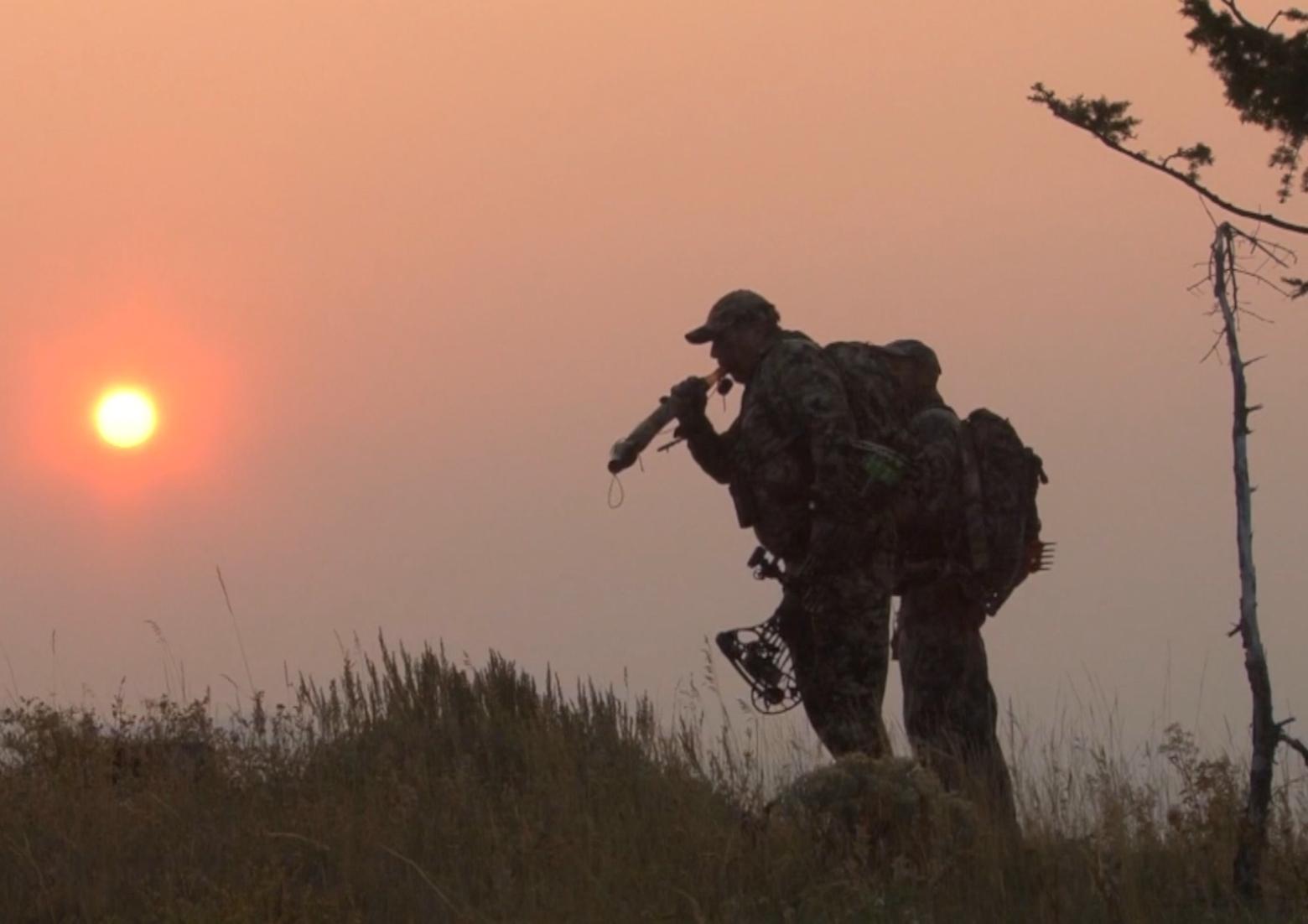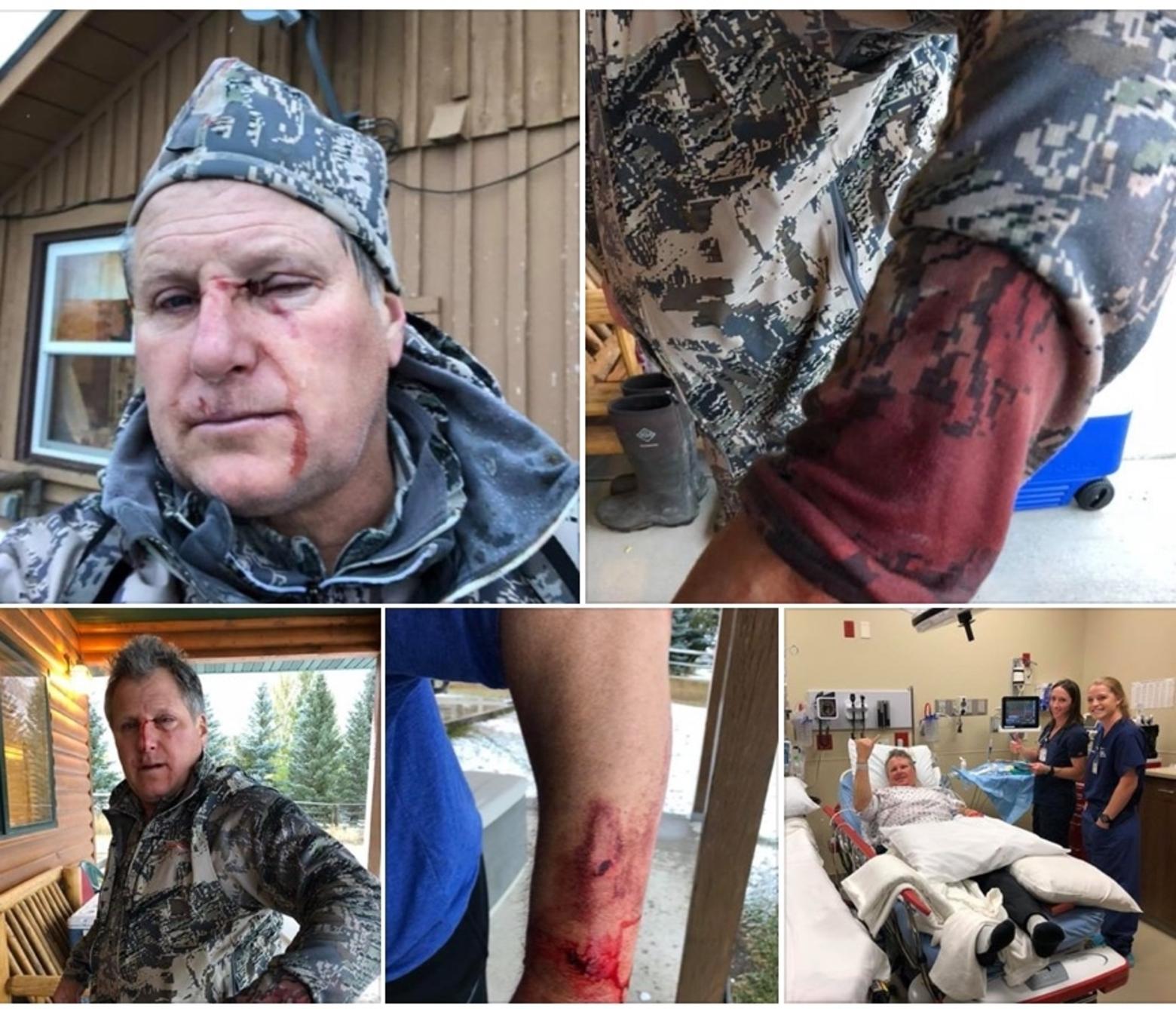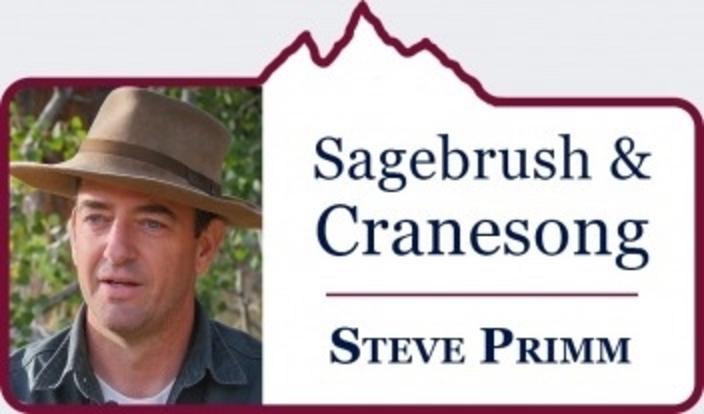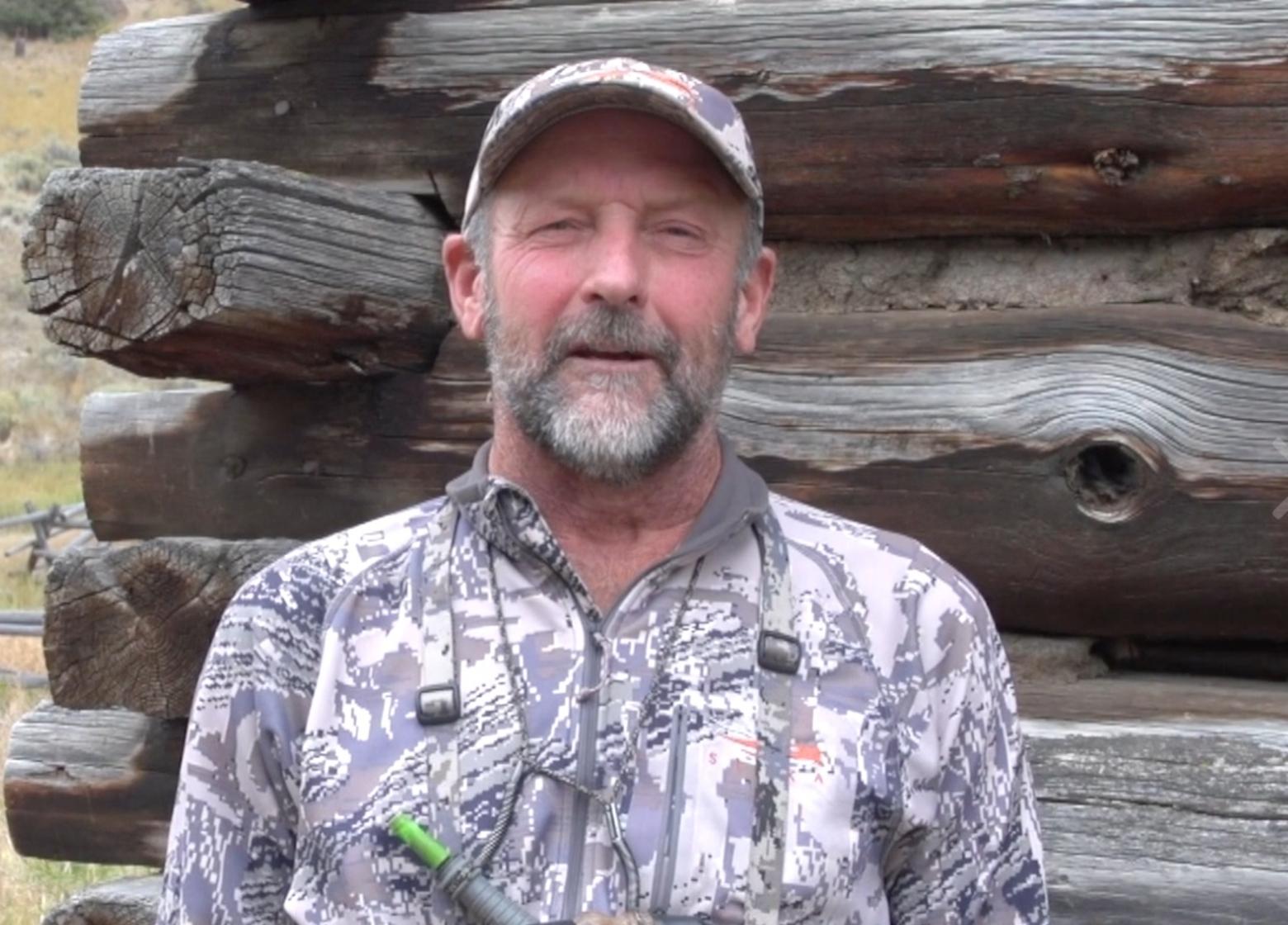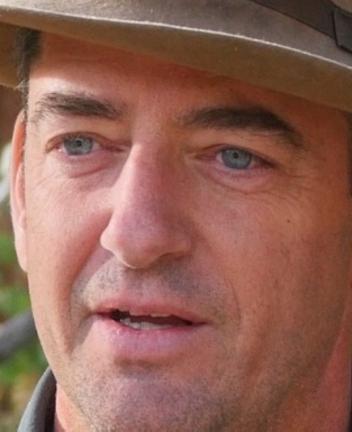Back to StoriesImagine Making A Wildlife Movie Whose Lessons Save Your Life
October 14, 2018
Imagine Making A Wildlife Movie Whose Lessons Save Your LifeStar in Bob Legasa's video about bear spray becomes hero in repelling grizzly attack
Imagine making a wildlife movie whose lessons save your own life.
In early October, Idaho filmmaker Bob Legasa released a short video (see below) on the effective use of bear spray, starring Montana hunting guide Greg Gibson. Within days, Gibson conclusively demonstrated that he could walk the walk, saving Legasa from a protective mother grizzly that the two bumped into just outside Yellowstone’s north boundary.
Details so far are limited to what Legasa posted to Facebook on Saturday evening: He and Gibson were stalking a herd of elk and encountered a grizzly with cub at 12 yards. The mother grizzly charged Legasa.
At such close range, Legasa had virtually no time to react other than to put his arms up to protect his face as the grizzly charged. The bear bit into his left forearm, breaking it in two places and taking him to the ground.
A good rule of thumb is that grizzly bears can charge at 30 miles per hour, which is roughly 15 yards per second. The bear that charged Legasa likely got to him in less than a second, then. Practiced bear-spray users can draw and spray in about two seconds, although most of us will need longer than that.
Gibson was just a few steps behind Legasa, and gave the attacking bear a blast of bear spray. The grizzly disengaged from Legasa and moved toward Gibson, who launched another cloud of bear spray at her. She and the cub beat a hasty retreat.
Legasa is currently recovering from his injuries in Bozeman, but took the time to share his experience, he wrote, to contain rumors and keep speculation from being “blown severely out of proportion.”
This type of encounter tends to occur several times every fall as hunters take to the woods in search of rutting bull elk and other big game. It’s a volatile mix: grizzlies have hunted elk for millennia. In addition to scavenging winterkill and hunting down vulnerable elk calves in the spring, grizzlies seek out injured or exhausted bull elk during the wapiti’s fall breeding season. Raising the stakes, grizzlies forage intensively in the fall as they seek to pack on fat reserves to get them through a long winter in their dens – a physiologic condition known as hyperphagia.
Moreover, bear biologists have found that Yellowstone grizzlies tend to move outside the north boundary of the park once hunting season begins, evidently in search of gut piles, injured elk, and other caloric jackpots left behind by hunters. Research and anecdotes alike point to this: grizzlies know that human hunters will create nutritious meals for the taking.
The take-home message is that we can expect grizzlies to be around elk for much of the year, particularly in the fall. And we can expect that hunting – moving stealthily, often in full camouflage, sometimes making elk sounds to lure the quarry into shooting range – will put hunters at risk of dangerous, close-quarters encounters with grizzlies.
[Below: video that Bob Legasa made about bear spray use that featured Greg Gibson]
Surprise encounters involving hunting take place regularly. In Wyoming’s Washakie Wilderness in 2008, a father and son called a bull elk within 50 yards of them, but also attracted a large male grizzly; the bear charged, and the father managed to kill it with an incredibly well-placed arrow to the heart.
In 2011, two hunters bugling for elk in Montana’s Gravelly Mountains inadvertently attracted a grizzly and cubs into close range; the mother grizzly charged when she got close, and one of the hunters stopped her with two bullets from a .357 magnum. A year later, a husband-wife hunting duo in the Madison Range attracted a grizzly with cubs by using an elk cow call; the mother grizzly bit the man on the arm and head and then fled with her cubs. In 2014, two brothers hunting north of Dubois, Wyoming heard “woof” sounds while waiting for elk, and found themselves confronted with a female grizzly with two cubs. The bear bit one of the brothers but was driven off when the other doused her with bear spray. In the same vicinity in 2017, a father and son had a similar encounter with a grizzly and cubs; the two had been sitting quietly, listening for elk, when the grizzly family wandered within 10 yards of their position. Unable to deploy his bear spray, the son sustained bite wounds until the father’s shouting drove the grizzlies away.
This is not an exhaustive record of hunter-grizzly run-in’s, and doesn’t include conflicts that occur over big-game carcasses, a different category of conflict that tends to have far graver results (including fatal attacks, which have occurred in 1995, 2001, and 2018).
Gibson and Legasa were clearly prepared to respond to a surprise encounter, and have gone the extra mile by sharing insights and experience to help keep people and grizzlies safe in the future. Watch their bear-spray instruction video carefully. Their experience also clearly illustrates the wisdom of hunting with a reliable partner.
Gibson’s advice is plainly based on experience and careful thought. He emphasizes situational awareness, and also gives logical advice about when to hit the bear spray trigger on a charging bear – if you begin spraying when the charging bear is 20 yards (60 feet) away, the bear will then collide with the spray cloud about 2/3 of a second later when it reaches 8-10 yards away from you. While bear spray delivered at closer range will still be effective, it’s better to have the bear run into your cloud with enough time for the spray to affect the bear’s vision and respiration, and with enough space for the bear to halt or divert its charge without making contact.
Legasa’s encounter was too close for any of these considerations, underscoring yet again the need to stay vigilant. Situational awareness can prevent many encounters, but it’s vitally important to hone your bear spray game so that you can respond like Gibson did when close-range encounters do happen. It’s worth pondering, too, how this encounter could’ve had a very different ending had Gibson responded with bullets instead of bear spray. While there have been cases in which firearms have been used to stop a mauling without shooting the victim, there have been at least three cases in recent years (2011 in northwest Montana; 2014 in the Yukon and 2014 in British Columbia) in which a person was killed by a bullet intended for an attacking grizzly.
EDITOR'S NOTE: For further reading: Mountain Journal's story by Todd Wilkinson: To Live and Die in Bear Country.

